History
In 1528, the Holy Roman Empire annexed the Bishopric of Utrecht, and Emperor Charles V immediately ordered the construction of a castle in Utrecht, not only to protect the domain from invasion by the duke of Guelders, but also to retain control over the city's unruly population. Construction began in 1529 and was completed in 1532.
On 8 November 1576, the States General of the Seventeen Provinces ratified an agreement, known as the Pacification of Ghent, to remove Spanish occupying soldiers. In response the castle's Spanish garrison prepared to be besieged by the Dutch rebels, turning the castle's cannons towards the city itself.
By December, the siege was underway and fighting broke out between the Spanish and Dutch. However, the garrison abandoned the castle on 11 February 1577, following negotiations between garrison commander Francesco Fernando d'Avila and Maximilien de Hénin-Liétard, the count of Bossu, who served as temporary Dutch stadholder. The abandonment was part of a general withdrawal agreed upon by the new Governor-General Don Juan one day later, on 12 February.
The citizens of Utrecht demanded that the castle be demolished to prevent the Spanish or other foreign powers from dominating the city again in future. However, the city government opposed demolition, so as not to offend the emperor. On 2 May, the population took the matter into their own hands. According to legend, a group of local women led by Trijn van Leemput stormed the castle and Trijn gave the signal for the castle to be destroyed by removing the first bricks from the castle walls. Despite doubts about the historical accuracy of this tale, a statue of Trijn van Leemput was erected on the Zandbrug bridge [ nl ] in Utrecht in 1955.
The demolition of the castle lasted until 1581. The two western towers remained standing, as they were part of the outer city walls. However, they were also demolished piece by piece in the following centuries; by 1919 they had completely disappeared. The foundations of Vredenburg castle were uncovered during archaeological excavations in 1976 and 1978.

Utrecht is the fourth-largest city of the Netherlands, as well as the capital and the most populous city of the province of Utrecht. The municipality of Utrecht is located in the eastern part of the Randstad conurbation, in the very centre of mainland Netherlands, and includes Haarzuilens, Vleuten and De Meern. It has a population of 361,699 as of December 2021.
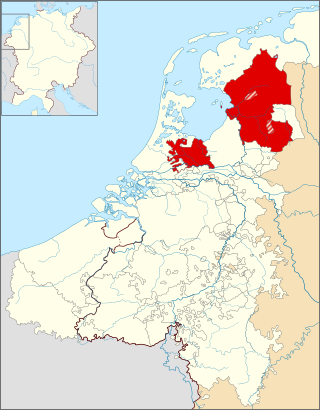
The Bishopric of Utrecht was an ecclesiastical principality of the Holy Roman Empire in the Low Countries, in the present-day Netherlands. From 1024 to 1528, as one of the prince-bishoprics of the Holy Roman Empire, it was ruled by the bishops of Utrecht.

St. Martin's Cathedral, Utrecht, or Dom Church, is a Gothic church dedicated to Saint Martin of Tours, which was the cathedral of the Diocese of Utrecht during the Middle Ages. It is the country's only pre-Reformation cathedral, but has been a Protestant church since 1580.
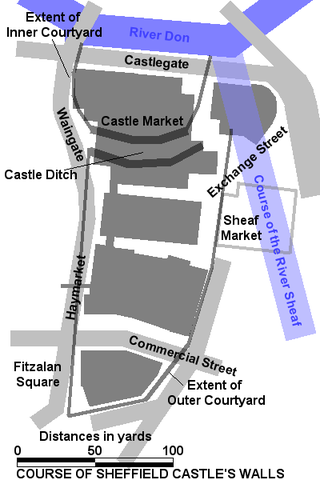
Sheffield Castle was a castle in Sheffield, England, constructed at the confluence of the River Sheaf and the River Don, possibly on the site of a former Anglo-Saxon long house, and dominating the early town. A motte and bailey castle had been constructed on the site at some time in the century following the Norman Conquest of England in 1066. This was destroyed in the Second Barons' War. Construction of a second castle, this time in stone, began four years later in 1270.
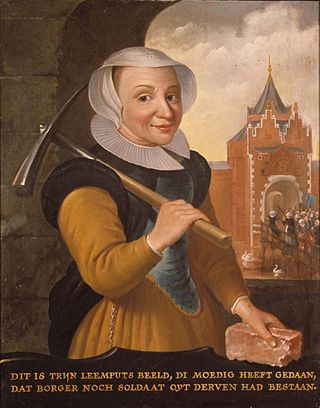
Trijn van Leemput was a Dutch heroine of the Eighty Years' War against Spain. According to local legend in Utrecht, she led a large group of women on May 2, 1577, to the castle of Vredenburg and gave the signal to begin demolishing the castle.
The Zoudenbalch family was one of the most prominent families of Utrecht throughout the Middle Ages to the age of the Dutch Revolt. They occupied all posts of importance in the city government, possessed various lordships in the vicinity and played a leading role in the history of the Sticht. The Zoudenbalchs were also Lords of the island of Urk in the Zuiderzee for over a century (1476–1614), and as such played a key role in the life of that community during troubled times in the 16th century.

Frederik Schenck van Toutenburg was the first Archbishop of Utrecht (1559–1580). Prior to Schenck's ministry as archbishop, Utrecht was a bishopric with a succession of sixty bishops. The last bishop of Utrecht, prior to Schenck was George van Egmond. After Schenck's death in 1580, the see would remain vacant until Sasbold Vosmeer assumed the archbishopric in 1602.

Maximilien de Hénin-Liétard, Count of Boussu was a soldier and statesman from the Habsburg Netherlands. During the Eighty Years' War he was the royalist stadtholder of Holland, Zeeland and Utrecht from 1567 until he was made a prisoner of war during the Battle on the Zuiderzee in 1573. After being freed under the terms of the Pacification of Ghent he changed sides and became commander in chief of the forces of the States-General of the Netherlands.

The Jacobikerk is a landmark Protestant church in Utrecht, Netherlands. The building is located on the St Jacobsstraat, named for its patron saint St. James the Greater. The church is one of the medieval parish churches of Utrecht, along with the Buurkerk, the Nikolaïkerk and the Geertekerk. Today it is known as the starting place for Dutch pilgrims on their way to Santiago de Compostella along the Way of St. James. The Dutch Confraternity of St. James is located around the corner on the St. Jacobskerkhof.

The Citadel of Liège was the central fortification of the strategic Belgian city of Liège, Wallonia, until the end of the 19th century. It is located in the Sainte-Walburge neighborhood, 111 metres (364 ft) above the Meuse valley. Together with those at Dinant, Huy and Namur, the Citadel of Liège forms part of the so-called Meuse Citadels.

The Buurkerk is a former church building in Utrecht (city), Netherlands on the Buurkerkhof. The building is the location of the Museum Speelklok, and the entrance is on the Steenweg. It is one of the medieval parish churches of Utrecht, along with the Jacobikerk, the Nicolaïkerk and the Geertekerk.

St. Mary's Church, also called Mariakerk or Maria Maior, was one of five collegiate churches in the Dutch city of Utrecht, the others being St. Martin's Cathedral, St. Salvator's Church, the Pieterskerk, and the Janskerk. It dated from the eleventh century and was considered one of the finest buildings in Romanesque style in the Netherlands.

The Battle of Borgerhout was a battle during the Eighty Years' War, of the Spanish Army of Flanders led by Alexander Farnese, Prince of Parma, upon a fortified camp at the village of Borgerhout, near Antwerp, where several thousand French, English, Scottish, and Walloon soldiers in service of the recently created Union of Utrecht were stationed. It took place during the reconquest by the armies of Philip II of Spain of the Burgundian Netherlands, whose different provinces had united in 1576 under the Pacification of Ghent to drive out the foreign troops and to grant religious liberty to Protestants.
The following is a timeline of the history of the municipality of Utrecht, Netherlands.
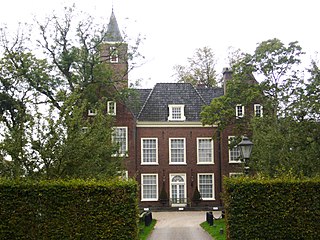
Binckhorst Castle is a 16th and 17th century manor built on top of a demolished medieval castle.
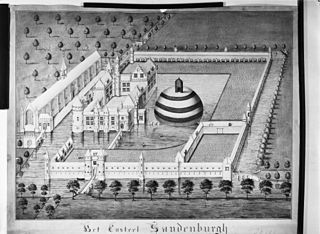
Zandenburg was a famous castle just south of Veere. Nothing remains of it, except some foundations below ground level.

The period between the Pacification of Ghent, and the Unions of Arras and Utrecht constituted a crucial phase of the Eighty Years' War between the Spanish Empire and the rebelling United Provinces, which would become the independent Dutch Republic. Sometimes known as the "general revolt", the period marked the only time of the war where the States–General of all Seventeen Provinces of the Habsburg Netherlands, except Luxemburg, were in joint active political and military rebellion against the Spanish Imperial government through the Pacification of Ghent. The Pacification formulated several agreements amongst the rebellious provinces themselves, and laid down their demands – including the immediate withdrawal of foreign troops from the Netherlands, restitution of old rights and privileges, and self-rule – to king Philip II of Spain.
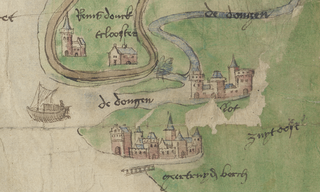
Geertruidenberg Castle was a major medieval castle in Geertruidenberg, then part of County of Holland now in North-Brabant, Netherlands

Castle Buren or Buren Castle was a princely residence in Buren in the Dutch province of Gelderland. The castle was one of the largest castles in the Netherlands. It was the seat of the Buren branch of the Egmond family, as well as of the House of Orange. It has been demolished in the 19th century. Today, not much remains except a monument in the former bailey of the castle as well as model in the local museum.
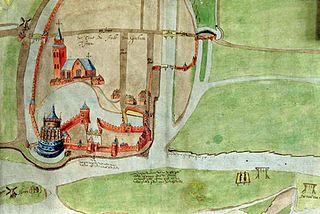
The Blue Tower was a castle with an imposing stone keep in Gorinchem, the Netherlands. It was a princely residence of Charles the Bold, Duke of Burgundy. The complex, which stood there between 1461 and 1578, gained an almost mythical status thanks in part to descriptions by the Gorinchem chronicler Abraham Kemp and the discovery of its foundations in 1983.




























